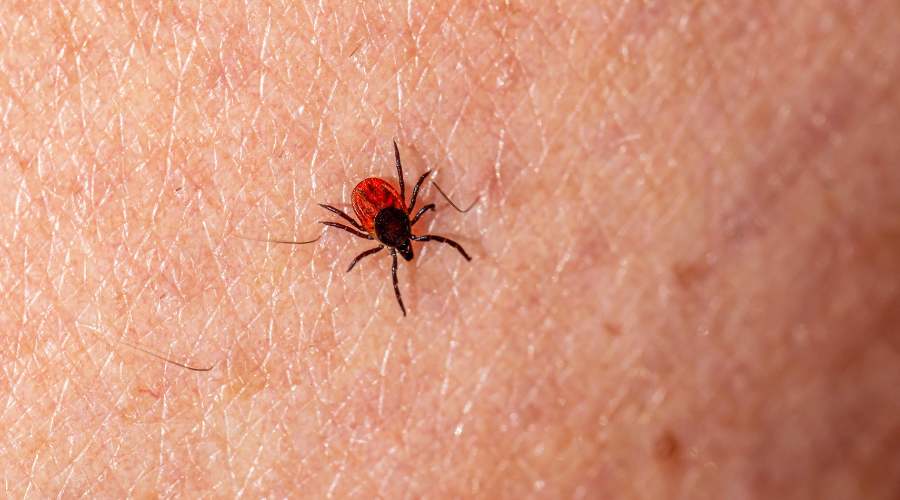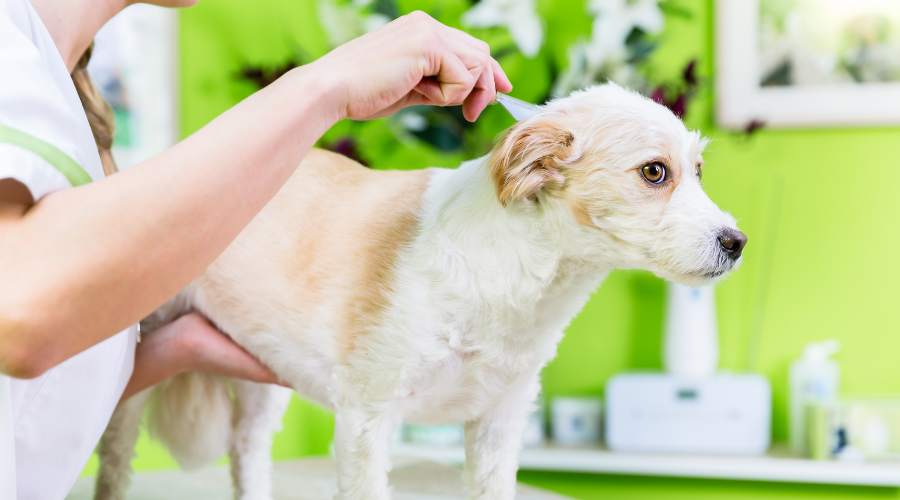How To Control Fleas: Guide To Get Rid of Fleas on Pets & Home
Fleas. Just reading that word is enough to make most pet owners cringe. As one of the most prevalent pests that plague our furry companions, they seem impossible to avoid. But with the right prevention and treatment, you can gain control and keep these tiny parasites from infesting your home and biting your pets.
In this guide, we’ll explore the flea life cycle, how to tell if your pet has fleas, and most importantly, proven ways to get rid of fleas and keep them from coming back. Learn how to outsmart these nuisance and protect your pets.
Understanding the Cycle Is Key
To get fleas under control, you need to understand how they reproduce and spread. Knowing the cycle will help you target them more effectively.
They go through four stages of development:
- Egg – Adult fleas lay eggs on an animal host, which fall off into carpets, bedding, and outdoor areas. They can lie dormant for long waiting to hatch.
- Larvae – Eggs hatch into larvae, which feed on organic debris and flea poop before spinning a cocoon and pupating.
- Pupae – The pupal period is when they develop into adults inside their cocoon. This can take 1-2 weeks.
- Adult – Mature fleas emerge hungry and ready to find a host to bite and feed on. The cycle repeats as the females lay eggs after feeding.
Attacking them in every phase is key to gaining control. If you only treat your pet, new adults can emerge from the environment to reinfest them later. A comprehensive approach works best.
Signs Your Pet Has a Flea Infestation
They move fast and can be hard to see on your pet. But there are some clear signs that will let you know if your dog or cat has become a flea hotel:
- Flea dirt – Look for tiny black specks in their coat, especially around their tail, groin, or belly. These “flea droppings” are actually digested blood.
- Skin irritation – Bites cause red, raised bumps that may scab over. You’ll see your pet scratching or biting at their skin.
- Hair loss – Constant biting and scratching can cause patchy fur loss, especially around the hindquarters.
- Anemia – Heavy infestations can lead to anemia from vital fluid loss. Pale gums, weakness, and lethargy signal a problem.
- Tapeworms – They can transmit tapeworm eggs when swallowed during self-grooming. Look for rice-like segments around your pet’s hindquarters.
If you notice any of these signs, it’s time to kick your flea control efforts into high gear. The next section covers proven ways to evict these freeloaders.
Treatment Options for Your Pet
Getting rid of fleas requires attacking all the cycle. No single product or treatment will work alone. Combining several methods is key to banishing them for good. Here are the top techniques to incorporate into your flea control arsenal:
Treat Your Pet Directly
Your dog or cat carries fleas, so you need to treat them directly. Here are excellent options to kill them on your pet:
- Oral flea prevention – Veterinarian-prescribed pills like Nexgard, Bravecto, and Capstar kill them and interrupt the their cycle.
- Flea collars – Newer models like the Seresto flea collar provide 24 weeks of continuous protection.
- Topical treatments – Frontline, Advantage II, and similar solutions repel and kill them for 4 weeks with just one application.
- Flea shampoos & sprays – Shampoos kill them on contact and can provide short-term relief from the itching and discomfort.
- Flea combs – Fine-toothed combs help remove dead fleas and eggs while bathing.
Be sure to consult your vet about the safest, most effective options for your pet. Never use dog treatments on cats.
Eliminating Fleas in the Home Environment
Knocking down environmental flea populations is crucial. Be meticulously clean to remove flea eggs and larvae hiding in your home:
- Vacuum – Use a powerful vacuum cleaner with a hose attachment to remove them from carpets, crevices, and furniture. Empty the canister outside immediately after.
- Launder – Wash pet bedding, blankets, and throws in hot, soapy water to kill them and their larvae.
- Groom – Bathe your pet regularly during treatment to limit environmental contamination.
- Diatomaceous earth – Sprinkle food-grade diatomaceous earth into carpets and crevices then vacuum up after a few hours to dehydrate eggs.
Spring cleaning takes on a whole new meaning when battling fleas! Be diligent about vacuuming and cleaning to remove juvenile flea life period.
Managing Bites on People
While our furry friends bear the brunt of bites, they will readily feed on humans if given the chance. Follow these tips to soothe bites on people:
- Wash the bite with antibacterial soap and apply an anti-itch cream. Oral antihistamines can also reduce itching.
- Apply a cold compress or ice pack to ease swelling and discomfort.
- Avoid scratching bites as this can lead to infection. Keep nails trimmed short.
- Use calamine lotion, hydrocortisone cream, or baking soda paste to reduce itching.
- Monitor for signs of infection like increased pain, swelling, warmth, or redness. Seek medical care if this develops.
While bites on humans are annoying, proper treatment and female flea control will end the problem. Focus efforts on comprehensive prevention methods.
How Do You Treat Flea Bites on Babies?
They can be especially uncomfortable for babies and small children. Here are some tips for treating bites on infants:
- Gently wash the bite with mild soap and liquid. Pat dry.
- Apply a small amount of hydrocortisone cream or calamine lotion to reduce itching.
- Give an appropriate dose of Benadryl to help relieve itching, but consult your pediatrician first.
- Run a cool compress over the bite to ease irritation and swelling.
- Trim your baby’s nails to discourage scratching. Keep fingernails clean.
- Watch for signs of infection like pus, increased swelling, or fever and see a doctor if these occur.
- Focus on comprehensive flea control in your home and on pets to eliminate the source of bites.
With proper care and prevention, bites can be managed and avoided in babies and children. Seek advice and medical attention if bites are severe.
Effective Flea Control Methods
Getting rid of fleas requires attacking all phases of the cycle. No single product or treatment will work alone. Combining several methods is key to banishing fleas for good. Here are the top techniques to incorporate into your flea control arsenal:
Treat Your Yard
Don’t neglect outdoor areas – they love dark, moist environments outdoors. Applying pesticides outside can help:
- Broadcast flea spray – Treat grass, under bushes, and sheltered areas in your yard with a broadcast spray.
- Spot spray – Target hot areas like under porches or dog houses with a pesticide.
- Flea bombs – Canister foggers release insecticide that penetrates outdoor spaces to kill eggs and larvae.
- Nematodes – Beneficial nematodes devour flea larvae when watered into lawns and outdoor spaces. A natural option!
Regular yard treatment during flea season limits the emergence of new adults. This “moat” helps keep them from hopping back onto your pet.
Flea Prevention Is Key
While the thought of implementing all these flea control methods may seem daunting, prevention is easier. Following these tips will help keep them away in the first place:
- Maintain flea prevention year-round on your pets – no skipped months!
- Stick with one product instead of constantly switching. This prevents gaps in protection.
- Vacuum regularly to capture emerged eggs before they mature.
- Inspect your pet’s coat daily to identify infestations early.
- Limit pet access to carpeted areas which harbor eggs.
- Treat your yard during season and when numbers increase.
- Speak with your vet for prescription prevention if over-the-counter options fail.
Consistency is vital. Sticking diligently with prevention and monitoring your pet will keep these parasites from gaining a foothold.
Frequently Asked Questions
Still have questions about ridding your pet of these pesky parasites? Here are answers to some common flea control FAQs:
Do fleas bite people?
Yes, they will happily bite and feed on humans if their preferred host isn’t available. Their saliva can cause itchy bumps on people.
How do dogs get fleas?
They spread via direct contact with an infested pet or from picking them up in the environment. They don’t jump long distances, so prolonged close contact is usually required.
How do I choose the right flea treatment?
Consult your veterinarian for the safest, most effective options for your specific pet. Evaluate lifestyle factors and your budget. Oral and topical treatments offer the most thorough protection or medication.
Can fleas live in my house without pets?
They struggle to survive long term without a host. But they can persist for weeks feeding on people until a new host is available. Vigilant cleaning is required.
How do I get rid of fleas in my yard?
Apply broadcast and sprays during peak season. Maintain your lawn, keep areas dry, and remove debris piles where they breed. Treat any outdoor pets as well.
The Takeaway: Consistency and Diligence Are Key
While ridding your pet and home of fleas takes work initially, staying on top of prevention makes control much easier. By using a regular flea preventative, vigilantly monitoring your pet, and quickly addressing any outbreaks, you’ll keep these pesky blood sucker from getting out of hand.
With the tips and techniques outlined here, you now have an arsenal of options to break the their cycle and protect your furry family members. Stay diligent, implement prevention year-round, and you can outsmart these tiny parasites for good!





